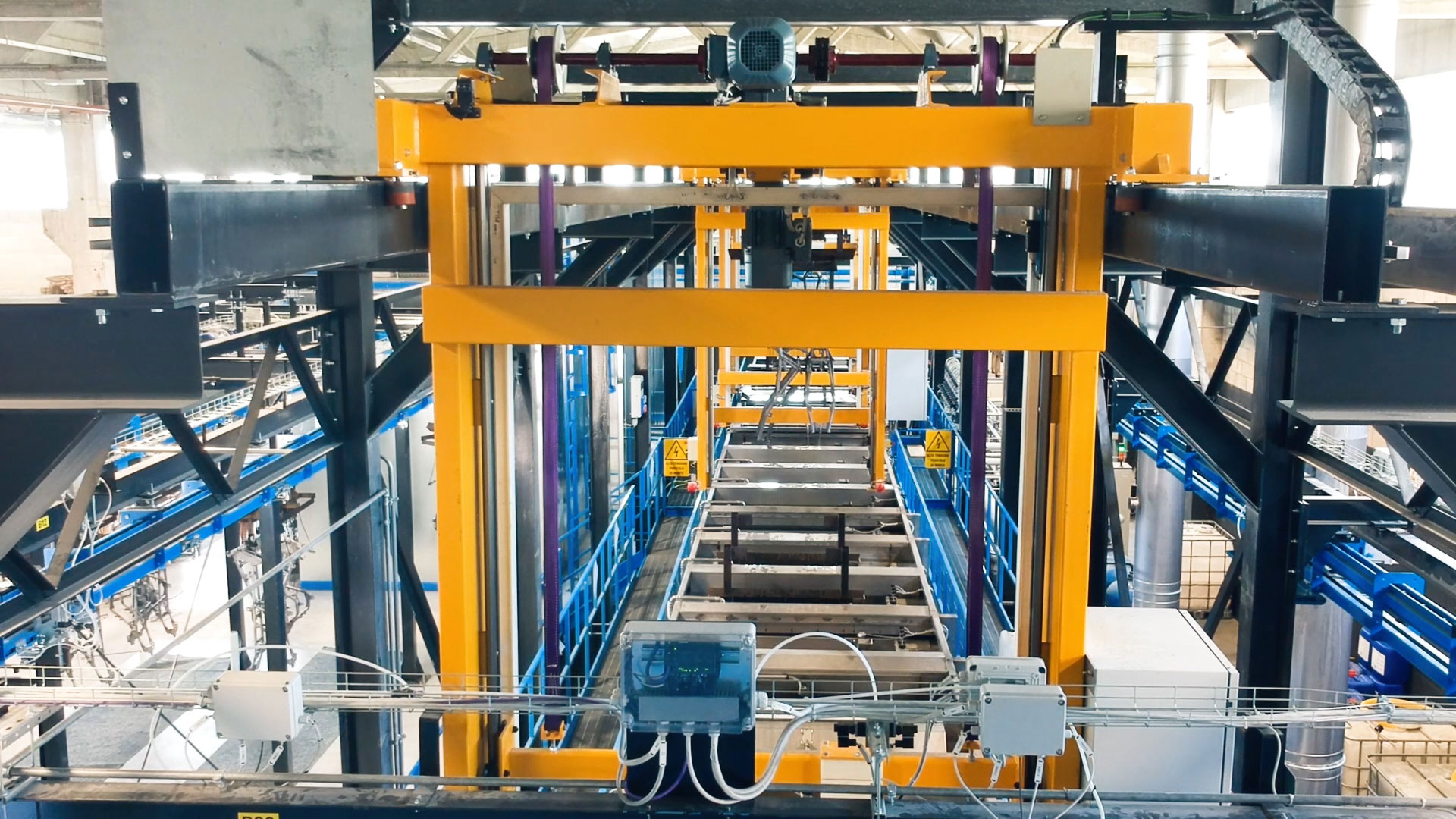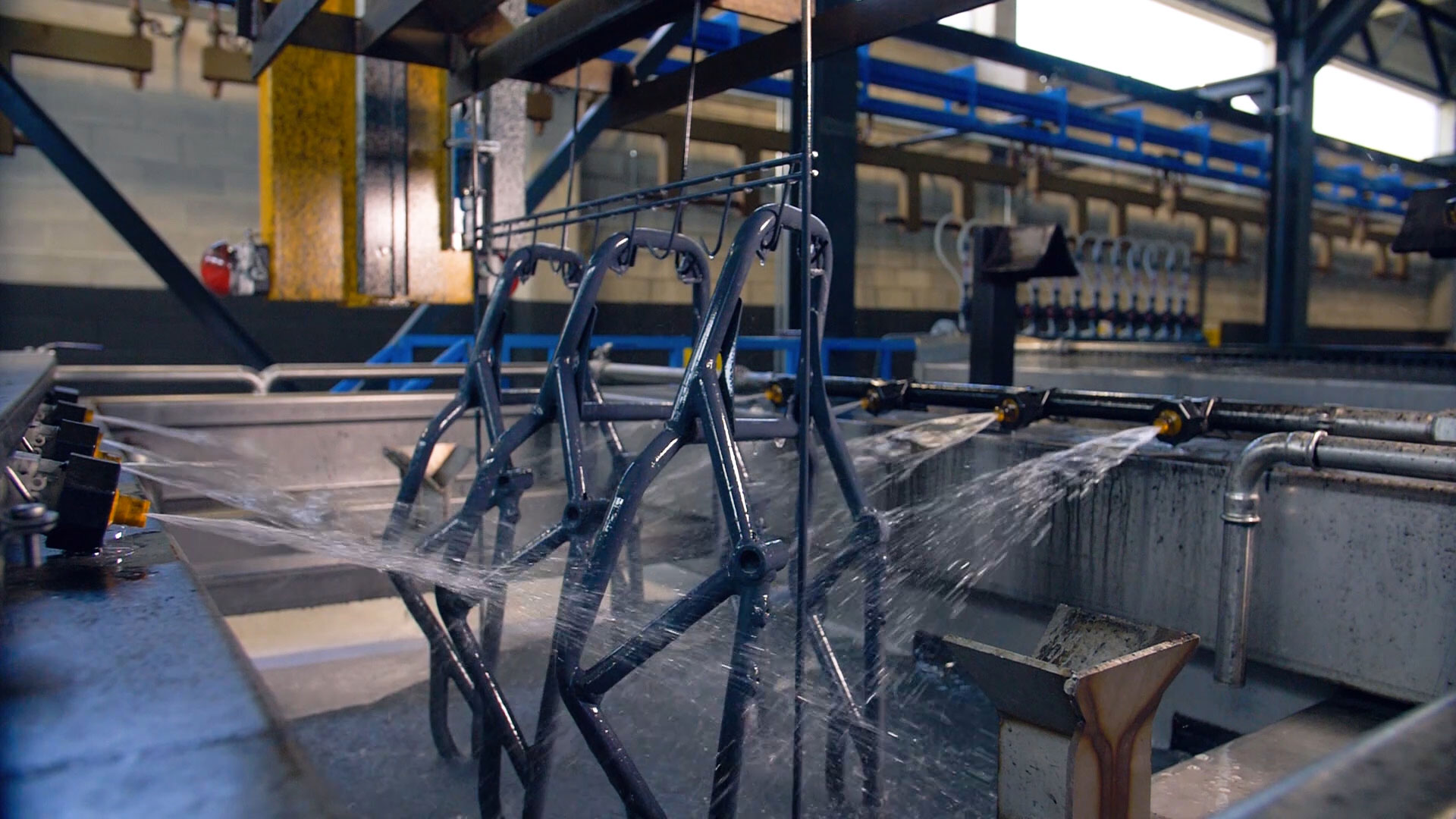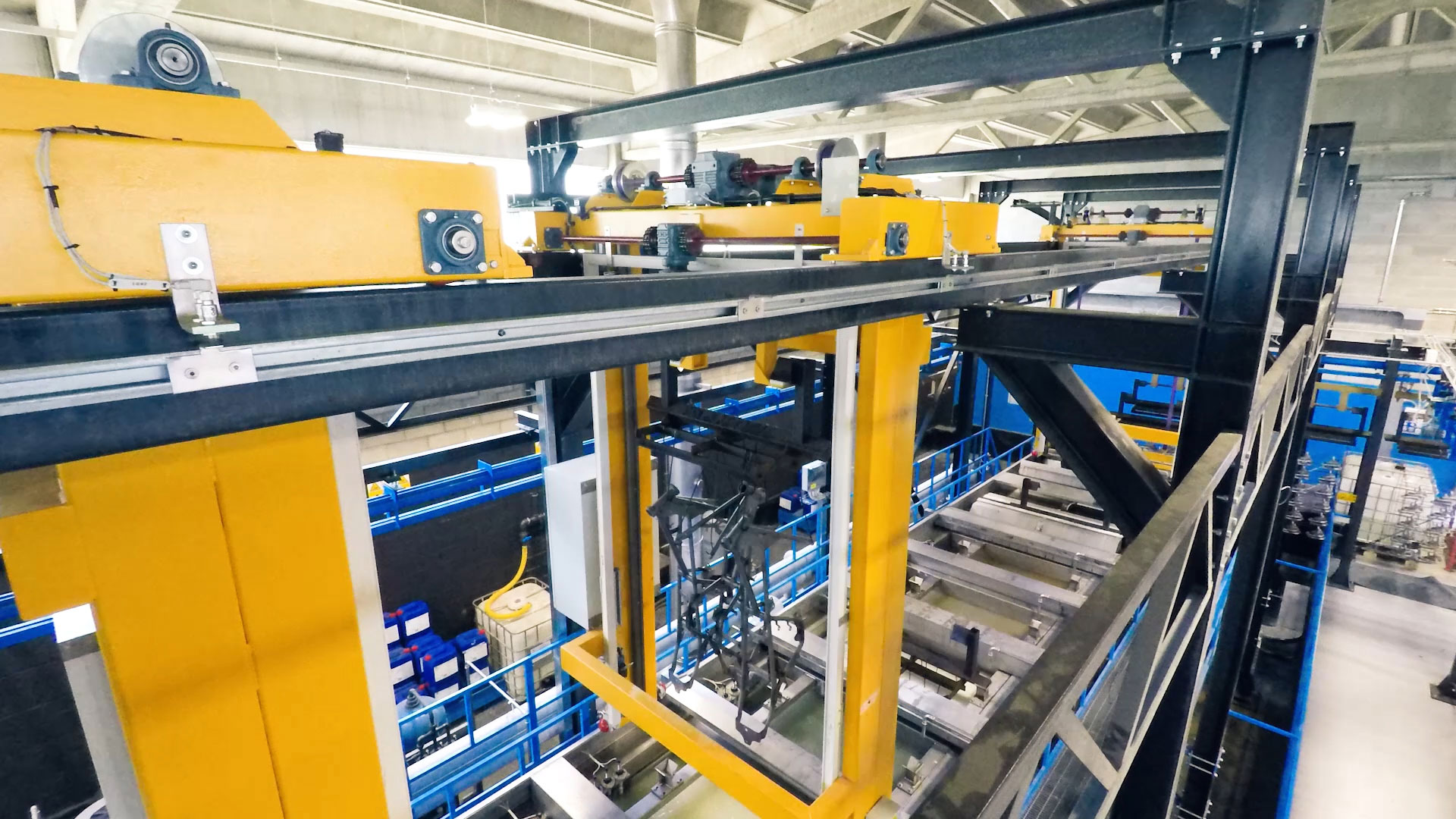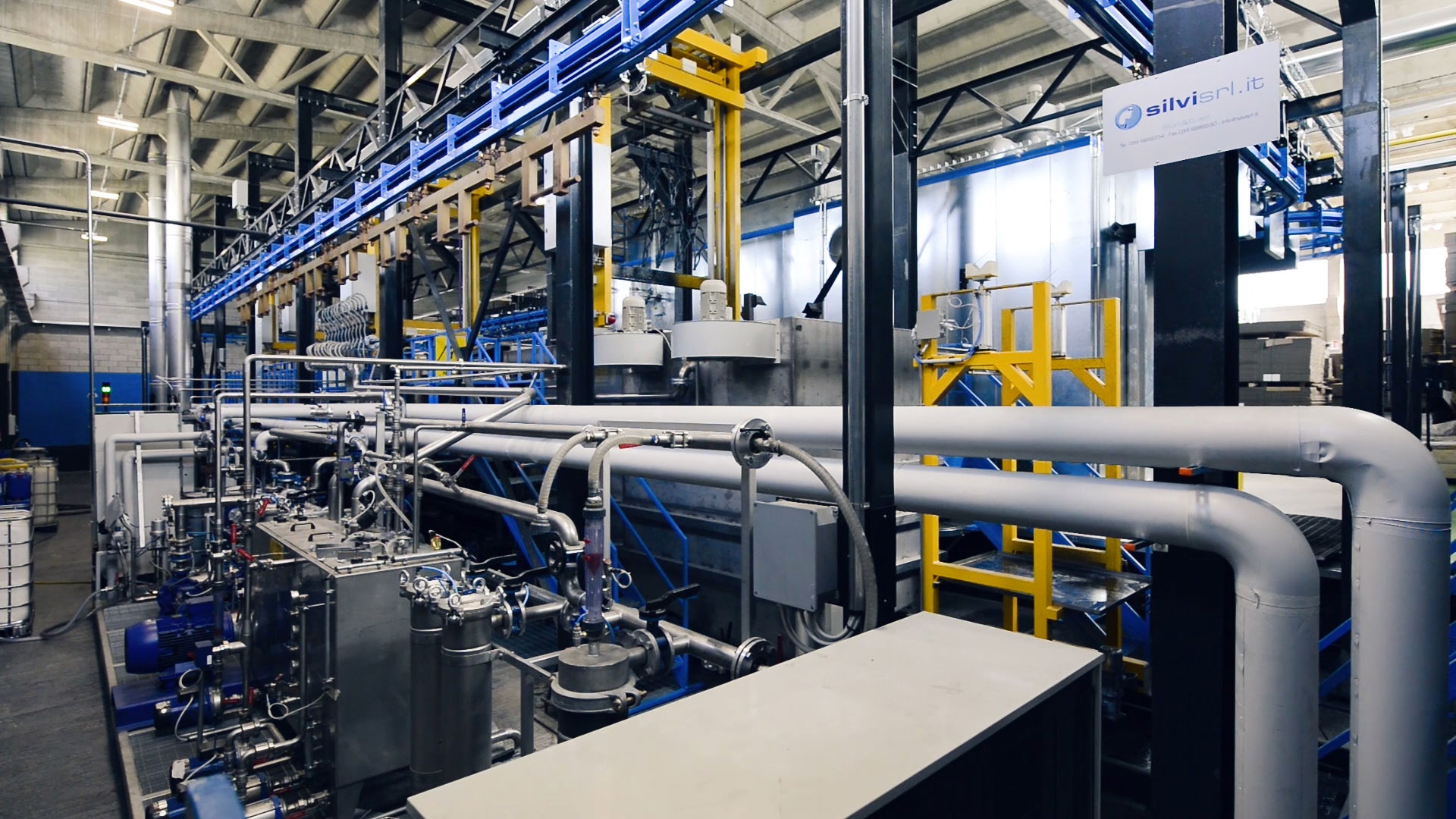STANDARD PRE-TREATMENT AND DEPOSITION CYCLE
Position 1: Spray alkaline degreasing. Temperature: 45°- 60°C
Position 2: Alkaline degreasing by submersion. Temperature 45°- 60°C
Position 3: Alkaline degreasing by submersion. Temperature 50°- 60°C
Position 4: Rinsing by submersion. Room temperature
Position 5: Rinsing by submersion. Room temperature
Position 6: Acid hot pickling. Temperature 45°- 50°C
Position 7: Rinsing. Room temperaturePosition 8: Micronized zinc activation. Room temperature
Position 9: Micronized salt zinc phosphate treatment by submersion. Temperature 30°-40°C
Position 10: Rinsing by submersion. Room temperature
Position 11: Demineralised water rinsing. Room temperature
Position 12: Aluminium passivation bath. Room temperature.
Position 13: Treatment with film-coating nanotech agent with passivating effect zirconium + Cr III by submersion. Room temperature
Position 14: Demineralised water rinsing. Room temperature.
Position 15: Cataphoresis bath.
Position 16: Ultrafiltrate bath 1.
Position 17: Ultrafiltrate bath 2.
Position 18: Blowing chamber.
Position 19: Manual blowing.
Position 20: Drying. Temperature 50°- 100°C
Position 21: Drying oven, reticulation, firing. Temperature 170°C, 85 min.
Position 22: Cooling.
The cycle is completely modifiable in order to offer the possibility of adapting the treatment to any request from the customer.
The final part of the treatment involves cooking in the oven for 85 minutes. at a temperature of approximately 170°C, this phase is aimed at ensuring the correct polymerization and cross-linking of the paint film.
After cooling, the material is unloaded, visually inspected and packaged as agreed with the customer.
The quality of the process is kept under control thanks to our internal laboratory used to verify the treatment parameters and the characteristics/performances of the film applied with instruments such as conductivity meter, PH meter, fluorometer, spectrophotometer, cross-cut cutter (adhesion test), thickness gauge and chamber for NS tests (ISO 9227 – ASTM B117).
Masking
Masking is an operation required if there is a need to protect any areas from treatment, for example threaded holes or functional assembly areas.
The material used is designed to guarantee total coverage of any product, to resist high temperatures and to avoid the deposition of any residues (e.g. glue) which could affect subsequent processing.



